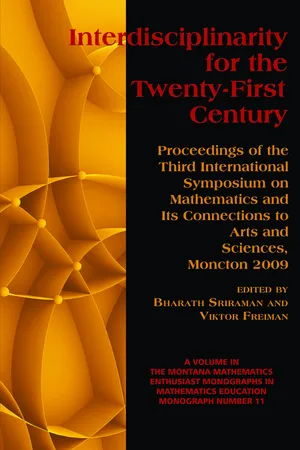
This is a test
- English
- PDF
- Available on iOS & Android
eBook - PDF
Interdisciplinarity for the 21st Century
Book details
Table of contents
Citations
About This Book
Plaintext description.
Frequently asked questions
At the moment all of our mobile-responsive ePub books are available to download via the app. Most of our PDFs are also available to download and we're working on making the final remaining ones downloadable now. Learn more here.
Both plans give you full access to the library and all of Perlego’s features. The only differences are the price and subscription period: With the annual plan you’ll save around 30% compared to 12 months on the monthly plan.
We are an online textbook subscription service, where you can get access to an entire online library for less than the price of a single book per month. With over 1 million books across 1000+ topics, we’ve got you covered! Learn more here.
Look out for the read-aloud symbol on your next book to see if you can listen to it. The read-aloud tool reads text aloud for you, highlighting the text as it is being read. You can pause it, speed it up and slow it down. Learn more here.
Yes, you can access Interdisciplinarity for the 21st Century by Bharath Sriraman, Viktor Freiman in PDF and/or ePUB format, as well as other popular books in Education & Research in Education. We have over one million books available in our catalogue for you to explore.
Information
Topic
EducationSubtopic
Research in EducationTable of contents
- Interdisciplinarity for the Twenty-First Century
- Proceedings of the Third International Symposium on Mathematics and Its Connections to Arts and Sciences, Moncton 2009
- Introduction
- Intercultural Positioning in Mathematics
- History in Mathematics Education—Why Bother?
- The Role of the Aesthetic in Mathematical Problem Solving1
- Mathematics in the Everyday World and at Work
- A Portrait on How Groups of Elementary Age Students in a French Language Minority Setting Pose an Environmental Problem
- Teaching Citizenship Education through the Mathematics Course
- Flow
- Learner Directed Opportunities through Adaptive Hypermedia Systems
- Quantitative Reasoning as a Tool for Understanding
- Interdisciplinarity through Processes of Modeling and SocioMathematical Decision Making
- Do Mathematical Laboratories Enhance Primary School Students’ Hands-On Learning Experiences?
- Amazing Math-Science- Arts Connections
- Mathematics in Contemporary Art
- Advancing the Concept of Variables through Cross- Curricular Stations between Arts and Mathematics Instruction
- Visual Arts and Mathematics
- Why is a Negative ´ a Negative = a Positive?
- Writing + Math = Opportunity
- Study of the Potential of the Use of Degrees of Certainty to Provide the Common Sense with an “Alert Bell”
- Visuo-Dynamic Learning
- Online Video Technology as Enabler for Teaching and Learning Multidisciplinary Topics
- Directional Pitch Spaces
- A Note on Fibonacci Numbers in Music
- Robotic-Based Learning
- NET Generation
- A City Built on Geometry
- Plato’s Timaeus and the Intervals Used in Traditional Music of the Middle East
- Using Origami as Context Builder to Teach (Pre)Math Skills
- Are There Mathematical Phenomena?
- Mathematical Literacy and How Scientific Experiments Can Promote that Conception
- Cross-Curricular Teaching between Mathematics and Biology
- A Call for Integrating Engineering through Cooperative Learning in the Mathematics and Science Teacher Education Program
- Choosing to Study Mathematics and Science beyond the Classroom
- a Brief History and Exploration of Some Didactic Journeys to Connect the Great Continents of Knowledge
- Some Remarks on the Comparison between Mathematical and Poetical Facts/Events
- About the Authors